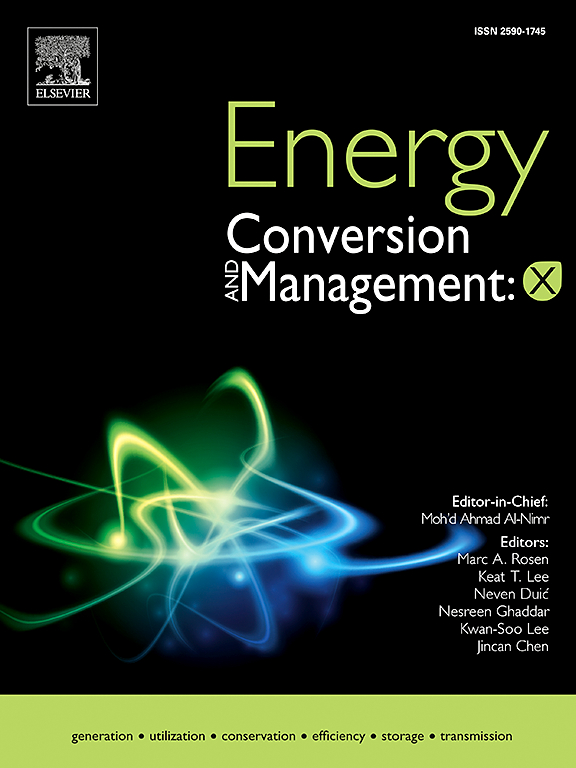3D copper telluride morphological leaf structure based triboelectric nanogenerator for wearable sensing application
IF 7.1
Q1 ENERGY & FUELS
引用次数: 0
Abstract
Enhancing the performance of triboelectric nanogenerators (TENGs) requires significant advancements in the triboelectric charge density, which is closely related to the electron affinity differences between materials and their surface-contact modifications. Metal telluride materials, particularly copper telluride (Cu2Te), are promising materials owing to their exceptional semiconducting properties and superionic conductivity. This study introduces a novel method using single-step chemical vapor deposition (CVD) to directly synthesize three-dimensional (3D) Cu2Te leaf-like structures on Cu substrates. Incorporating 4 wt% Cu2Te into a polyvinylidene fluoride (PVDF) matrix enhances the charge transfer properties by inducing β-phase crystallinity, aligning the molecular dipoles, and increasing the polarization. The highly electronegative nature of PVDF plays a crucial role in optimizing the triboelectric charge separation by significantly enhancing the electron affinity at the interface. At the same time, Cu2Te further facilitates interfacial charge transfer through its high conductivity and large surface area. Complementing this, the PVA/NaCl tribopositive layer with a 0.2 M NaCl concentration leverages disrupted hydrogen bonding within the PVA matrix caused by ion–dipole interactions with Na+ ions. These interactions increase the availability of free hydroxyl groups, thus enhancing the electropositivity and charge generation. The PVDF/Cu2Te and PVA/NaCl layers establish a strong triboelectric interface, thereby optimizing the charge transfer and retention. The TENG structure, with an area of 20 cm2, achieved a peak open-circuit voltage of 170 V, a short-circuit current of 32 µA, and a power density of 1.62 W/m2 at an impedance of 40 MΩ. The device demonstrated remarkable durability over 80,000 operational cycles and maintained stable performance after 30 days of testing. Additionally, the TENG successfully powered 56 LEDs, a stopwatch, and charged capacitors in the range of 1 μF, 10 μF, and 22 μF for self-powered electronics, demonstrating its potential for wearable sensing and sustainable electronic applications. This study highlights the potential of metal telluride materials to advance TENG technology for high-performance energy harvesting and self-powered electronic devices.

求助全文
约1分钟内获得全文
求助全文
来源期刊

Energy Conversion and Management-X
Multiple-
CiteScore
8.80
自引率
3.20%
发文量
180
审稿时长
58 days
期刊介绍:
Energy Conversion and Management: X is the open access extension of the reputable journal Energy Conversion and Management, serving as a platform for interdisciplinary research on a wide array of critical energy subjects. The journal is dedicated to publishing original contributions and in-depth technical review articles that present groundbreaking research on topics spanning energy generation, utilization, conversion, storage, transmission, conservation, management, and sustainability.
The scope of Energy Conversion and Management: X encompasses various forms of energy, including mechanical, thermal, nuclear, chemical, electromagnetic, magnetic, and electric energy. It addresses all known energy resources, highlighting both conventional sources like fossil fuels and nuclear power, as well as renewable resources such as solar, biomass, hydro, wind, geothermal, and ocean energy.
 求助内容:
求助内容: 应助结果提醒方式:
应助结果提醒方式:


